SUMMARY
This is AI generated summarization, which may have errors. For context, always refer to the full article.
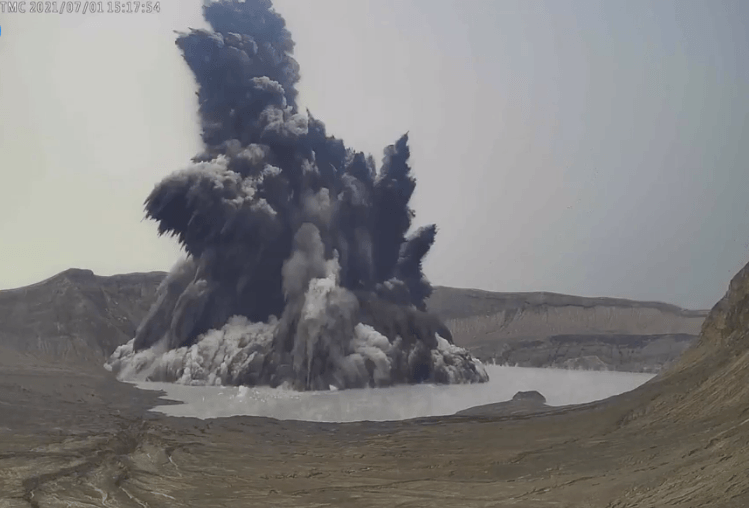
The bulletins and live updates on Taal Volcano from the Philippine Institute of Volcanology and Seismology (Phivolcs) keep us informed and better prepared in case the situation worsens. However, they contain geological terms that can leave the average person scratching their heads.
Taal Volcano was put on Alert Level 3 on Thursday, July 1, prompting residents in the surrounding areas to evacuate, and local governments and agencies to mobilize and conduct relief operations.
Below, we explain some of the commonly used words in these updates to help you make better sense of what our state volcanologists mean. These are based on Phivolcs’ and the United States Geological Survey’s definitions.
Ash
Volcanic ash is composed of fragmented volcano particles – rocks, mineral crystals, and glass – less than two millimeters in diameter. They are carried through the air in an eruption plume or in the ash clouds of moving pyroclastic currents.
Wind carries ash from an erupting volcano, and gravity pulls it down to settle over areas nearby – this is known as ashfall.
Caldera
A large, basin-shaped volcanic depression that is much larger than vents. When a volcano erupts, its magma chamber is emptied and can no longer support the ground above it, causing the ground to collapse and form a large depression. A caldera is different from a crater, which is smaller and created by the explosive excavation of rock during a volcanic eruption.
Some calderas form a lake as the bowl-shaped depression fills with water.
Deformation
This refers to changes to the surface of a volcano due to the movement of magma under the surface. This can only be detected with techniques such as Global Positioning System (GPS), tiltmeter, Interferometric Synthetic Aperture Radar (InSAR), or an Electronic Distance Meter (EDM).
Edifice
The main structure of the volcano on the surface of the earth. It is formed by the eruption of lava, tephra, pyroclastic flows, lahar, and related volcanic deposits.
Fissure
A crack in the ground wherein there is a distinct separation caused by the movement of magma underneath it.
Degassing
The emission of a gas from magma or a volcano.
Magma
Molten rock beneath the surface of the Earth. When it erupts onto the surface of the Earth – meaning, it has escaped the volcano’s openings – it becomes lava.
Phreatomagmatic
An eruption that involves magma and water, which leads to the ejection of steam and proclastic fragments from a volcano. (READ: FAST FACTS: Phreatomagmatic and other types of volcanic eruption)
Magmatic eruptions are driven by magma, which turns into lava once it reaches the earth’s surface, while phreatic eruptions are driven by gas and steam.
Plume
A mixture of volcanic particles and gas that rises through the atmosphere from active vents and during volcanic eruptions.
Pyroclastic density currents (PDCs)
A mixture of hot fragmented volcanic particles (pyroclastics), gases, and ash that run down volcanic slopes.
The kinds of PDCs include:
- pyroclastic flows – a dense collection of fragments and gases
- pyroclastic surges – less dense and move faster
- base surges – ground-hugging clouds of gas and ash that result from water interacting with magma.
Seismic swarm
A series of minor earthquakes occurring in the same area and short period of time, none of which are considered the main shock or generated by the same fault.
Sulfur dioxide
One of the gas components of magma. Sulfur dioxide is a colorless, soluble gas that forms sulphuric acid when combined with water. (READ: How does sulfur dioxide affect the environment?)
Upwelling
The rising of seawater, magma, or other liquid to the surface.
Vog
Also called volcanic smog. It is the visible haze made of gas, tiny particles, and acidic droplets that are created when sulfur dioxide and other volcanic gases interact with sunlight, oxygen, moisture, and dust.
Volcanic earthquake
An earthquake generated by processes involving or related to magma beneath or near an active volcano. It is different from a tectonic earthquake, which is produced by faulting.
Volcanic tsunami
A wave of water that occurs in a caldera or crater lake during an eruption. Water in the caldera or crater lake moves due to the deformation of the lake floor caused by rising magma, fissuring, the entry of PDCs into the lake or sea.
– Rappler.com
Add a comment
How does this make you feel?
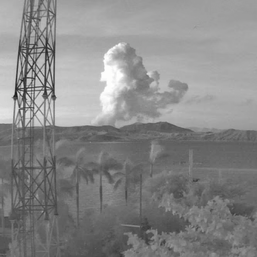
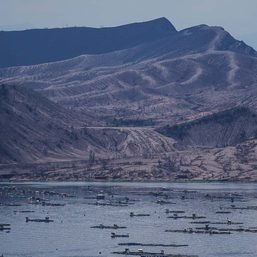
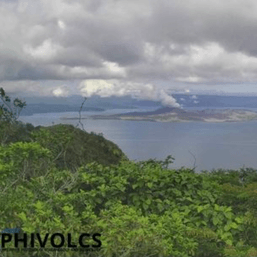
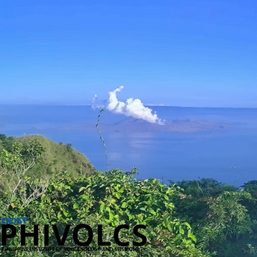

There are no comments yet. Add your comment to start the conversation.